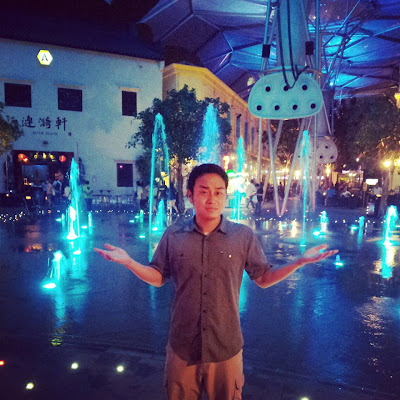This is the Luang Prabang I came for...
This ritual is why I went to Laos. I really wanted to see this and I heard that tourists can even participate too. I know it may not be for everyone, but the chance to be a part of something like this was supposed to be really special. We planned around this specific tradition. We arrived early the day before, went to bed early, and made sure to wake up well before dawn to not miss what was arguably the only reason why we went to Laos. This even took precedent over tubing down the river in Vang Vieng.
It was awful.
It's not the monks' fault--they are semi-forced by the government to continue this facade. However, it is no longer the beautiful tradition that it once was. It is overrun with tourists... and not the good kind.
Do you know the tourist with an SLR around their neck, snapping "artistic" pictures, who claim to be a "world citizen?" That in itself is bad, but take that same person, put them inches away from a monk's face (often times children), flash on, taking picture after picture. The kind that has no shame. No remorse. No sense of dignity, and due to this lack of even the slightest strand of dignity, feels no need to respect the humanity anyone else.
He's so excited to shove his camera into these monks' faces, he can't even hold on to his umbrella.
It made me absolutely infuriated.
How can anyone treat another human being like that? It wasn't just European tourists or the Chinese tourists either... though they were admittedly the worst. But even at a zoo or aquarium, you turn off your flash for the animals. So why would you think it's ok to shove a camera into the face of another person? It's not a circus act. They aren't statues or artifacts. They are people. This is their home. You are a guest. Would you put a huge lens in front of a chef as they're cooking your dinner? At a respectful distance and as long as you aren't being distracting, it can be fine. But remember--you are NOT a professional photographer. These are NOT professional models. DO NOT treat another human being like an object. Why do I even have to say this? Don't most people from most countries claim their culture to be "civilized"? Don't most travelers love bragging about how "cultured" and "refined" they are? Have you no sense of decency or respect? Then, how can you turn around and do something so awful and heinous to a fellow human being?!? How can you wake up in the morning and look at your smug self in the mirror and feel good?
Me trying to keep up with the steady stream of monks
I did participate in giving alms, which made me thought, am I any better? Sure, I wasn't right in their face with my camera, but aren't I objectifying them just like these other tourists? Aren't I, by taking pictures to share, tweeting my thoughts, and eventually, writing this blog post, promoting the very thing that I hate? Won't more people come and in turn, perpetuate this shameful shadow of a once great tradition? Am I any better?
Here's to the monks. I'm so sorry.
At least I was able to get a Beerlao overlooking the Mekong River. One of the highlights of my trip was simply relaxing and reflecting while sipping on a cold beer. After this morning, I definitely needed it.











.jpg)
.jpg)
.jpg)




























